On Friday, we traveled to the Holocene site of Napaget, a massive and artefact-rich sand dune that overlooks the beautiful Lake Turkana. The site is about an hour away (as the lorry drives), and on the way we passed some truly impressive termite mounds, almost big enough for a person to live in (I wonder how large the kitchen is?).
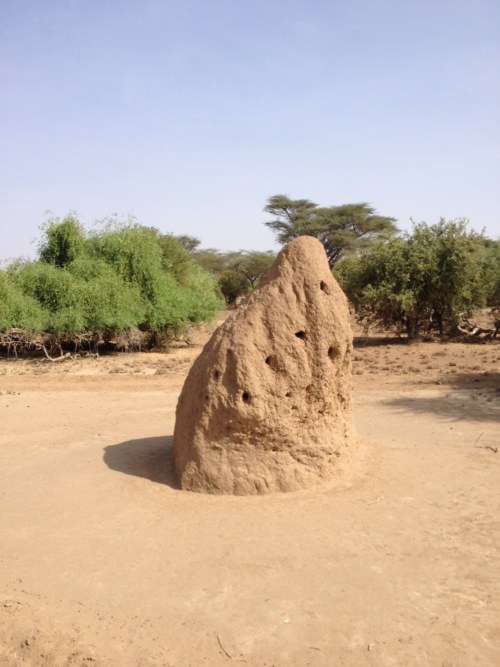
This termite mound is several feet taller than the average person!
At the site, we would be conducting similar activities to what we did at Ayangiyeng: surveying and flagging every artefact or concentration, and discussing interesting finds. However, because of the size of the survey area here, we spread out in a long line, with everyone standing about two meters apart and marched eastwards to the lake.
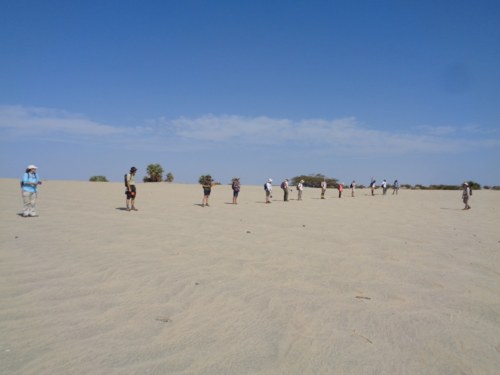
The students line up as they wait for their surveying orders from Dr. Professor Harmand.
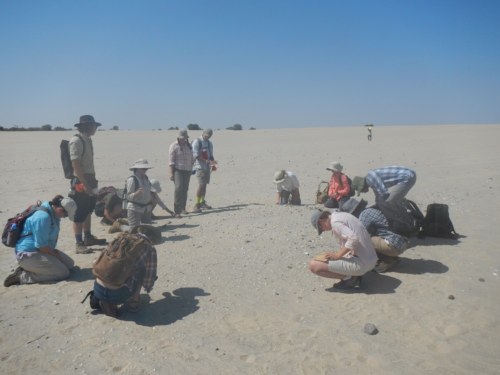
Dr. Professor Harmand explains why concentrations of artefacts such as this one are important.
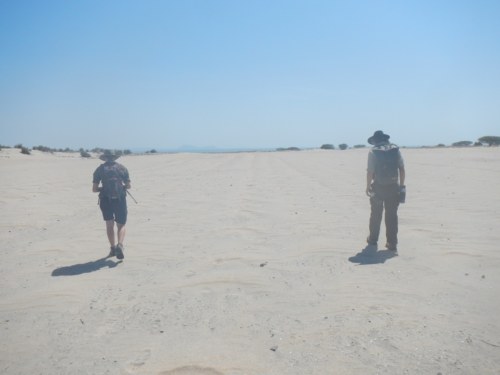
Jon and Danielle survey adjacent columns.
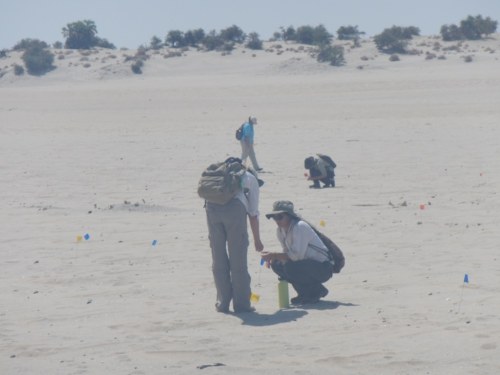
Jayde helps Natalie identify an artefact!
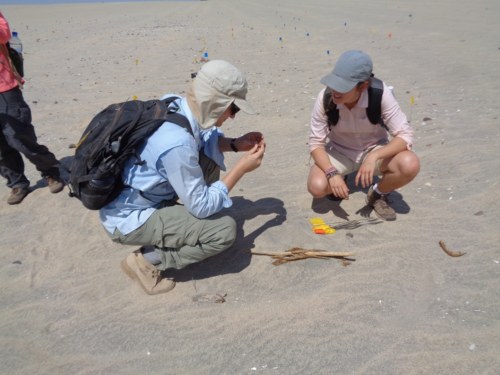
TA Mattia discusses a piece of pottery with Millie.
The students found some truly amazing artefacts. There were many pieces of pottery, ostrich egg shell beads, and a few other artefacts of whose function we aren’t entirely positive. The pictures below show some of their finds!
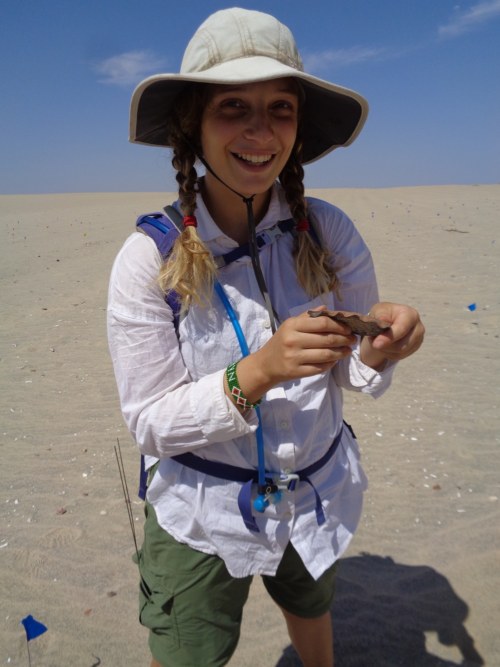
Kathryn found a gorgeous piece of pottery! Note the waves on the edge.
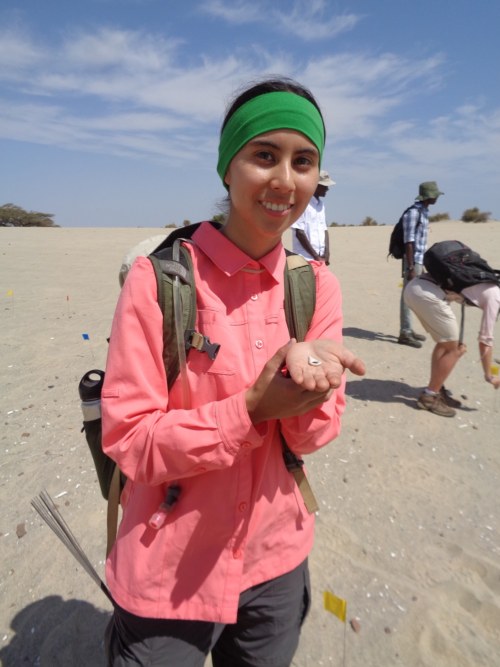
Carla found this strange artefact… We spent several minutes coming up with creative answers for what it may be!
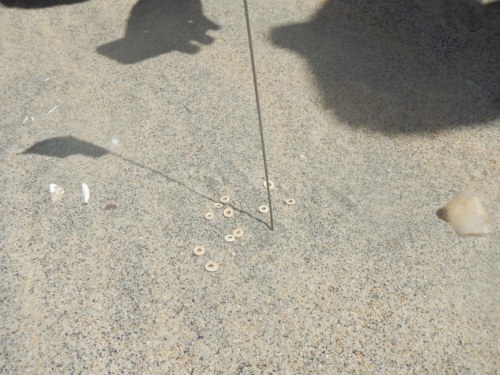
Ten ostrich egg shell beads were found together!
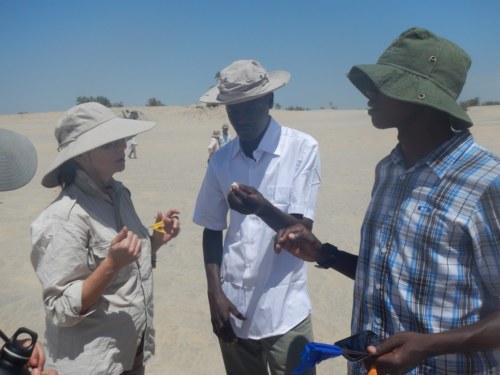
Dr. Professor Harmand and Francis try to identify another curious artefact.
At noon, we ate lunch under a very inviting tree who so kindly provided benches for us with its protruding roots. Afterwards, the students enjoyed cooling off in the lake!
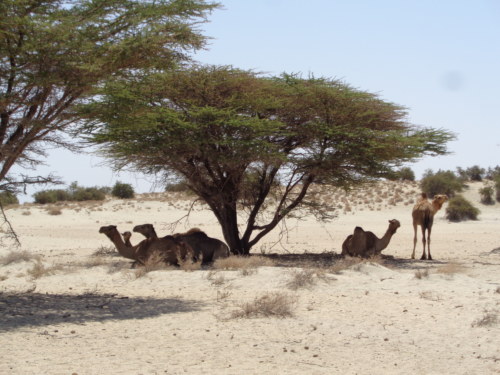
Camels seem to have perfected life in the desert…
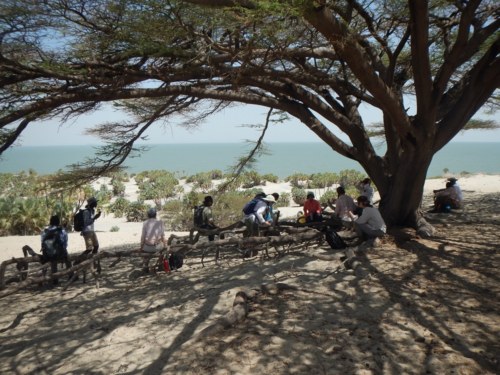
so we took a page out of their book! As they say, when in Turkana, do as the camels do.
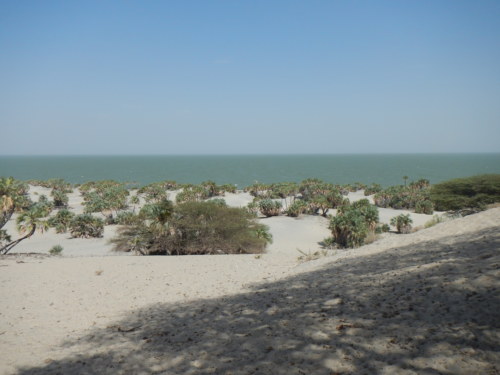
Lake Turkana from atop a sand dune.
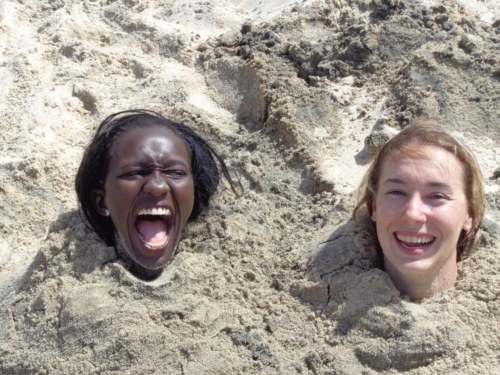
Esther cries for help; Danielle seems more comfortable.
And on our way back to the lorry, Max and Jon decided to roll down the sand dune (unfortunately for a very dizzy Max, a barreling Jon came flying down the hill and crashed into him).
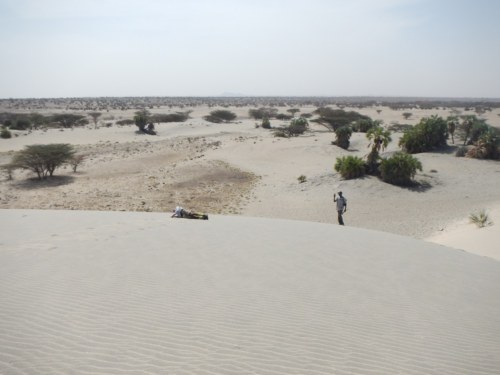
Going…
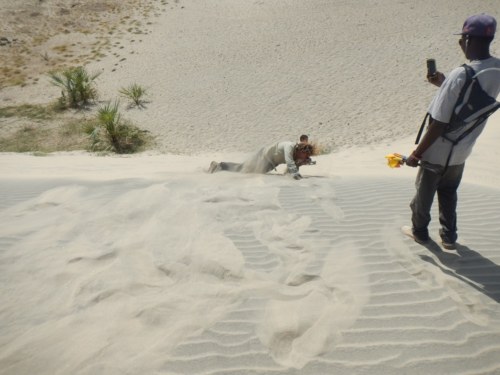
Going…
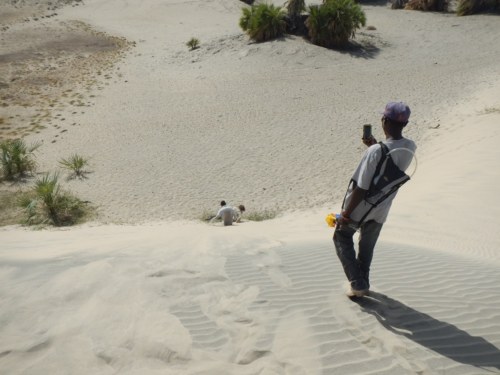
Gone!
We will be going camping from Monday to Wednesday of next week near the village of Nariokotome. On our way there, we will visit some important archaeological sites, including Lomekwi 3, the oldest archaeological site in the world, and several of the sites of Kokiselei. Though the site of Kokiselei 4 is particularly important because it marks where the oldest Acheulean tools have been found (dated at 1.76 million years ago), the other Kokiselei sites are also significant because they are dated near the overlap of the Oldowan and Acheulean industries.
To prepare for our trip, we spent the preceding Sunday discussing the Lomekwian industry. First discovered by Dr. Professor Harmand’s team at the Lomekwi 3 site and dated at 3.3 million years, these are the oldest stone tools produced by hominins! To train our eyes in anticipation of our upcoming visit, Dr. Professor Harmand took us into her lab at TBI-Turkwel to firsthand see some of the tools that they had excavated!
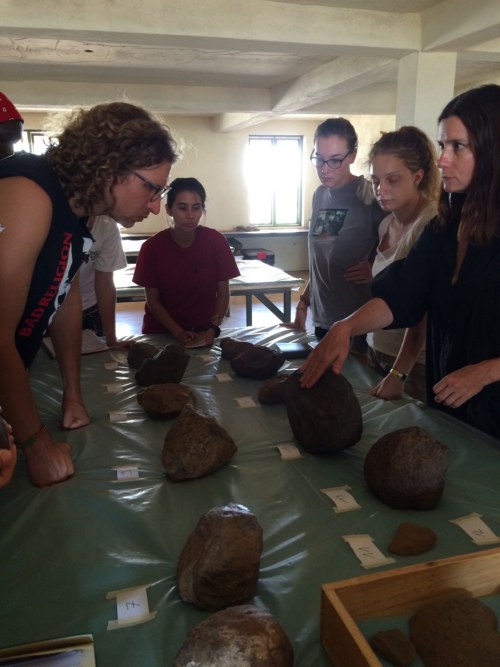
Dr. Professor Harmand discusses this Lomekwian tool with the class.
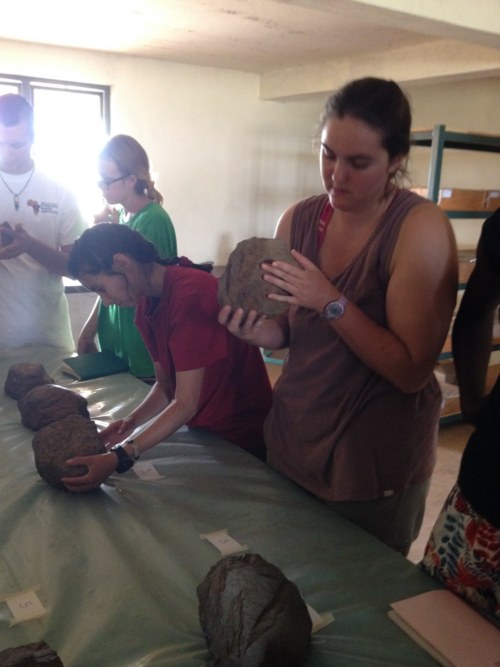
Morgan and Carla examine separate Lomekwian tools.
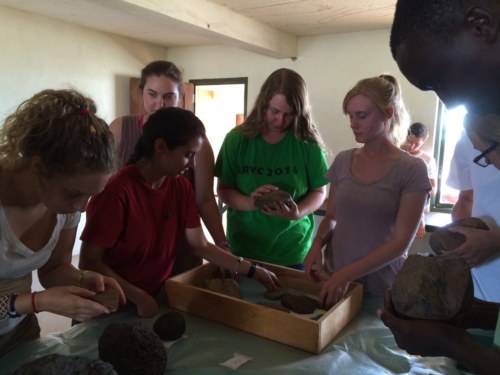
The students are absolutely intrigued at how different these tools are from the Oldowan!
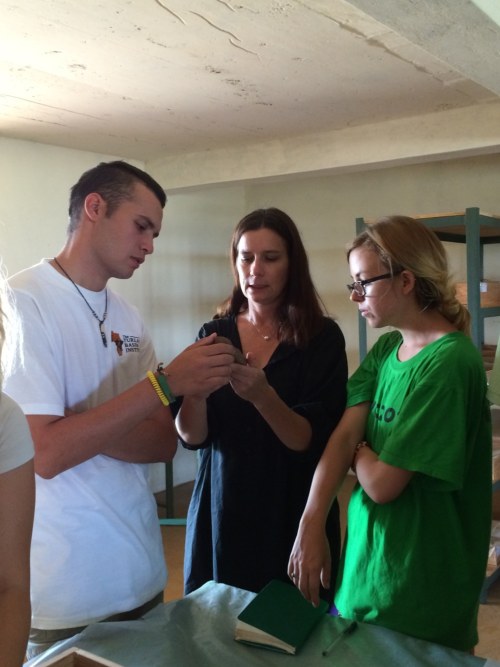
Max and Emily ask Dr. Professor Harmand about this Lomekwian flake.
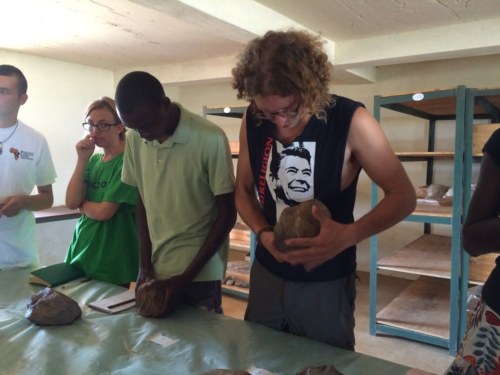
Jon and Tobias are amazed at the average size of the Lomekwian tool.
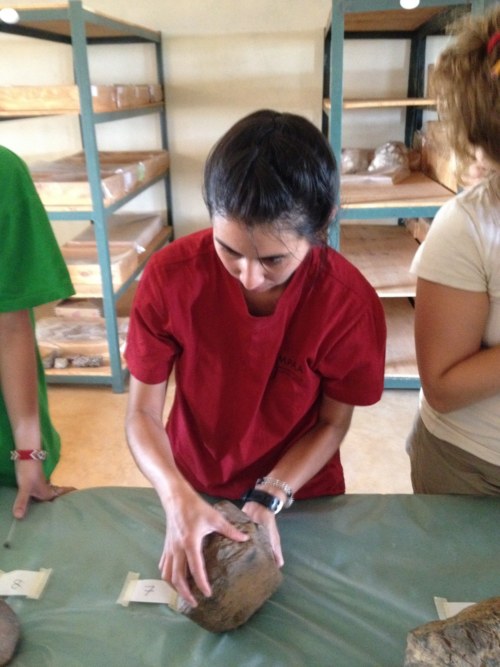
Carla examines this core from every angle.
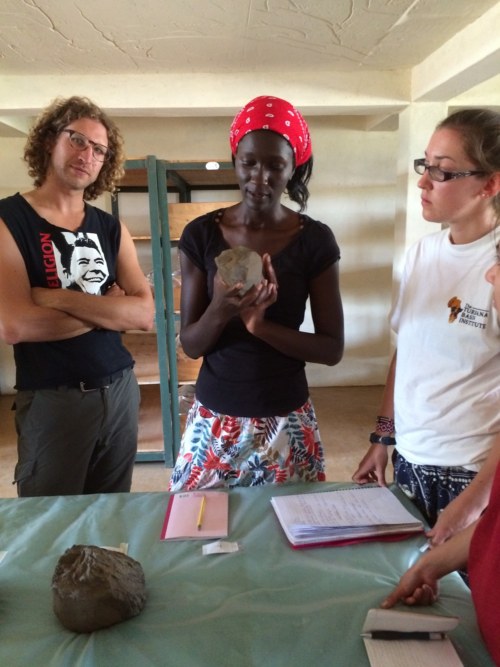
Esther and Millie are intrigued by this Lomekwian artefact, Jon more so by the camera!
Tune in to the next blog to learn about our camping trip to Nariokotome!





